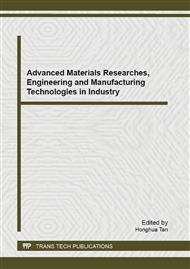p.311
p.316
p.322
p.328
p.333
p.337
p.341
p.346
p.352
Hot Carrier Energy and Energy Relaxation Length in a-Se Photoconductive Target
Abstract:
The a-Se HARP (High-gain Avalanche Rushing amorphous Photoconductor) target was prepared, and the avalanche characteristics were investigated. In this paper, to study avalanche multiplication at a high electric field, the lucky-drift model was used. In addition, the energy-and field-dependent energy relaxation length was considered. The avalanche multiplication factor was obtained from the current-voltage characteristic of the a-Se HARP target. The threshold field of the 0.4-μm-thick a-Se HARP target was 0.88×108 V/m. The hot carrier energy at the threshold field for the avalanche multiplication in the 0.4-μm-thick a-Se HARP target was 0.21 eV. The hot carrier energy in the a-Se layer increases linearly as the electric field increases. The hot carrier energy also saturates as the avalanche multiplication factor increases. In addition, the energy relaxation length between the inelastic scattering events in the a-Se layer saturates as the hot carrier energy and the avalanche multiplication factor increase.
Info:
Periodical:
Pages:
333-336
Citation:
Online since:
September 2013
Authors:
Price:
Сopyright:
© 2013 Trans Tech Publications Ltd. All Rights Reserved
Share:
Citation:


